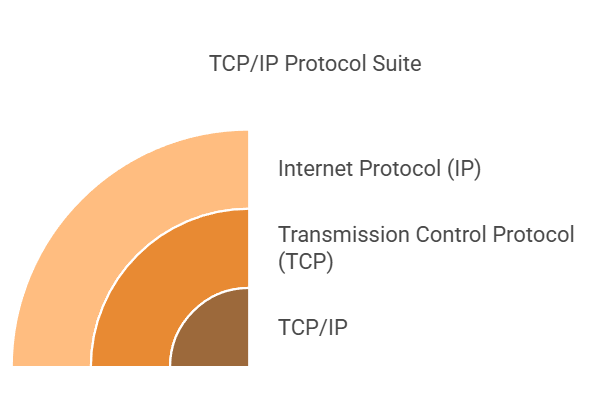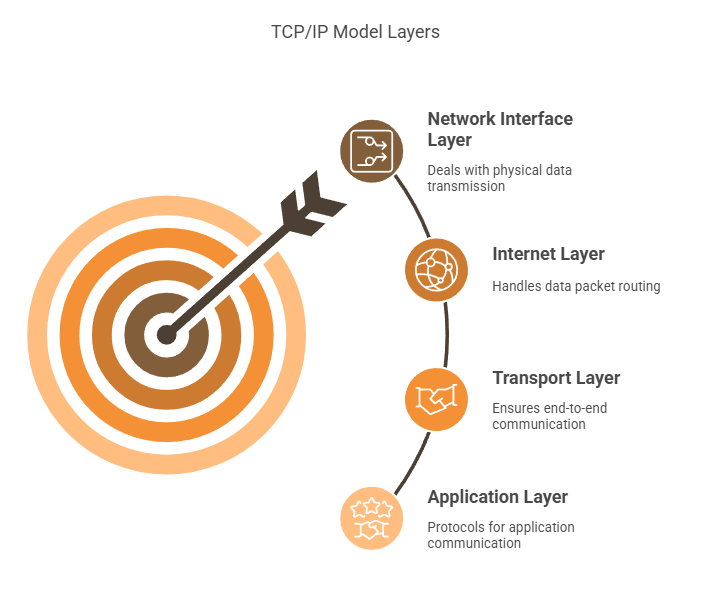Understanding TCP/IP: The Backbone of Internet Communication
TCP/IP, or Transmission Control Protocol/Internet Protocol, is a fundamental suite of communication protocols that enables data exchange over the internet and other networks. It serves as the backbone of the internet, allowing different devices and networks to communicate effectively. This document aims to provide a clear understanding of TCP/IP, its components, and its significance in modern networking.
Contents
What is TCP/IP?
TCP/IP is a set of protocols that govern how data is transmitted over the internet. It was developed in the 1970s by the United States Department of Defense to facilitate communication between different types of computer networks. The suite is named after its two primary protocols: Transmission Control Protocol (TCP) and Internet Protocol (IP).
TCP/IP is an essential protocol suite that underpins the functionality of the internet. Understanding its components and operation is vital for anyone involved in networking, software development, or internet technology. As the internet continues to evolve, TCP/IP remains a cornerstone of digital communication, enabling connectivity and data exchange across the globe.
Key Components of TCP/IP

1. Internet Protocol (IP):
- IP is responsible for addressing and routing packets of data so that they can travel across networks. Each device connected to the internet is assigned a unique IP address, which identifies it on the network. IP operates at the network layer of the TCP/IP model.
2. Transmission Control Protocol (TCP):
- TCP ensures reliable transmission of data between devices. It establishes a connection before data is sent, checks for errors, and ensures that packets are delivered in the correct order. TCP operates at the transport layer of the TCP/IP model.
4. Other Protocols:
- User Datagram Protocol (UDP): Used for applications that require fast, connectionless communication.
- File Transfer Protocol (FTP): Used for transferring files between computers.
- Hypertext Transfer Protocol (HTTP): The foundation of data communication on the web.
- Simple Mail Transfer Protocol (SMTP): Used for sending emails.
The Layers of TCP/IP Model
The TCP/IP model is often represented in four layers:
- Application Layer: This layer includes protocols that applications use to communicate over the network (e.g., HTTP, FTP).
- Transport Layer: This layer is responsible for end-to-end communication and error recovery (e.g., TCP, UDP).
- Internet Layer: This layer handles the routing of data packets (e.g., IP).
- Network Interface Layer: This layer deals with the physical transmission of data over the network.

How TCP/IP works?
As is known, TCP layer isn’t the highest one in TCP/IP model. The top layer of TCP/IP stack is Application Layer, allowing users to exchange data between applications, involved in communication system.
Let’s look closer at how TCP/IP works at this level.
Using a web browser to view websites on your computer, you rely on Hyper Text Transfer Protocol (HTTP), the Application Layer protocol. By entering a URL into a web browser, you actually send an HTTP command to a web server, requesting it to transmit the required web page to your computer.
The role of HTTP protocol here is to define which actions each part of the client-server communication should take in response to various HTTP commands.
Other Application Layer protocols, packaged together with TCP/IP, include File Transfer Protocol (FTP), Telnet (Telnet), Simple Mail Transfer Protocol (SMTP), and many others.
As it’s also possible to access the Internet via an analog phone modem, there are Remote Access Protocols responsible for this kind of network communication. Serial Line Internet Protocol (SLIP) or Point-to-Point Protocol (PPP) pack the data and then send it to the access provider's modem over the dial-up phone connection.
It’s worth noting that there are a number of other networking protocols, aimed at providing special services within TCP/IP protocol set. They include User Datagram Protocol (UDP), Internet Control Message Protocol (ICMP), the Interior Gateway Protocol (IGP), the Exterior Gateway Protocol (EGP) and more.